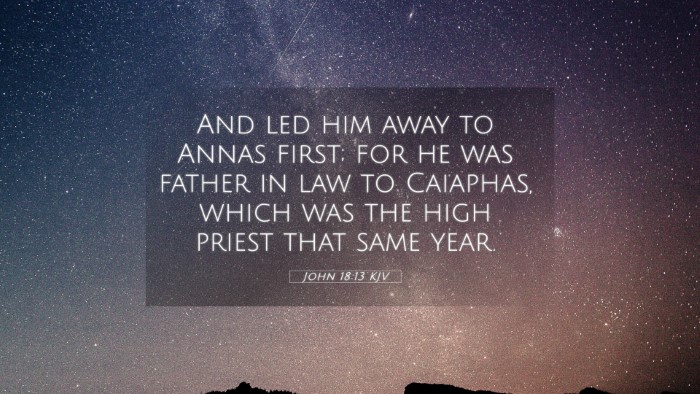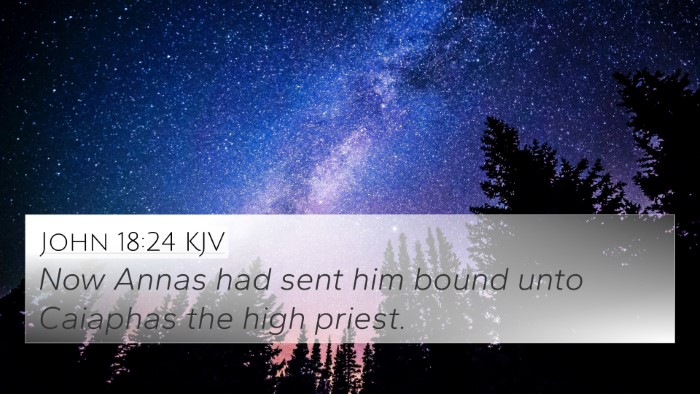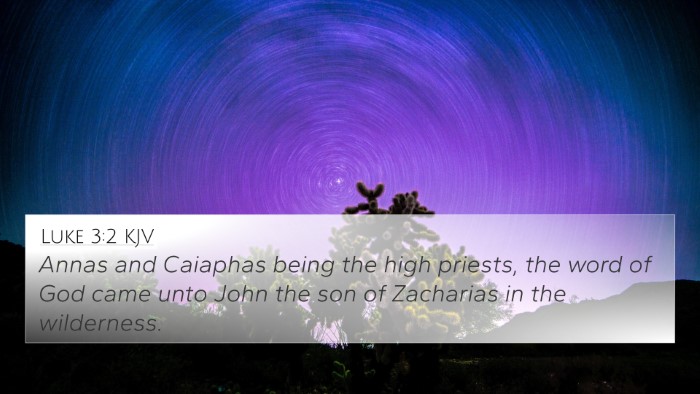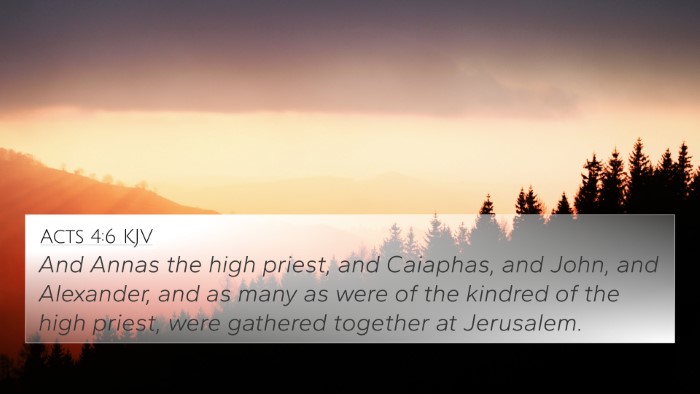Understanding John 18:13
John 18:13 states:
"And they led Him away to Annas first; for he was the father-in-law of Caiaphas, which was the high priest that same year."
Overview of John 18:13
The context of John 18:13 is significant as it marks the beginning of the series of legal proceedings against Jesus following His arrest in the Garden of Gethsemane. The verse introduces Annas, a key figure in the Jewish leadership, indicating the political and theological climate of the time.
Commentary Insights
Insights from various public domain commentaries provide a deeper understanding of this passage:
- Matthew Henry: Highlights that Annas was deposed but still held considerable influence as the patriarch of the priestly family. The Jewish leadership’s actions reflect their attempt to circumvent the Roman authority while asserting their own significance.
- Albert Barnes: Points out the familial connections within the priesthood and the conflicts of interest present throughout Jesus' trials. He emphasizes Annas's role in the narrative as emblematic of the old Jewish order resisting the new covenant brought by Christ.
- Adam Clarke: Discusses the importance of this scene, noting the political maneuvering among the religious leaders to ensure a conviction against Jesus. He frames this moment as emblematic of the spiritual blindness that characterizes the leadership of the time.
Thematic Connections
John 18:13 sets the stage for several important themes in the New Testament, including:
- The power dynamics of Jewish leadership.
- The fulfillment of Old Testament prophecies regarding the rejection of the Messiah.
- The transition from the old covenant to the new covenant.
Bible Verse Cross-References
For a thorough understanding of John 18:13, it is essential to consider relevant cross-references that elucidate the relationships between various biblical themes and narratives. Here are some pertinent references:
- Luke 3:2: Mentions Annas and Caiaphas, establishing their influence during John the Baptist's ministry.
- Matthew 26:57: Discusses the trial before Caiaphas, providing insight into the broader judicial process against Jesus.
- John 11:49-53: Highlights Caiaphas's prophecy concerning Jesus’s death during the Sanhedrin gathering.
- Mark 14:53: Details the trial of Jesus before the priestly authorities, illustrating the unity among the religious leaders against Him.
- Acts 4:6: Refers to Annas and Caiaphas again, showcasing their continuing influence after the resurrection of Jesus.
- Isaiah 53:3: Prophecies concerning the rejection of the Messiah, resonating with the hostility faced by Jesus.
- John 1:11: "He came unto His own, and His own received Him not," reflecting the broader context of rejection among the Jewish leaders.
Exploring Connections Between Bible Verses
In examining John 18:13, it's pertinent to explore the connections that arise in the narrative of Jesus’s trials:
- Comparative Bible verse analysis: The trial settings in the Gospels share commonalities and unique elements, revealing different perspectives on the event.
- Identifying connections between the Old and New Testament: The role of Annas and the reactions of the Jewish elite can be traced back to the prophetic traditions in the Old Testament.
Scriptural Cross-Referencing
Utilizing tools for Bible cross-referencing, such as a Bible concordance or cross-reference Bible study methods, aids in enriching the interpretation of John 18:13.
- How to use Bible cross-references: Reading related verses helps to form a coherent picture of the themes at play.
- Bible reference resources: Engaging in comprehensive Bible cross-reference materials can lead to deeper insights in study groups or personal reflection.
Connections in Sermon Preparation
Bible cross-references for sermon preparation can be vital for pastors and teachers seeking to create a cohesive message about Jesus’s trial.
- Interpreting Biblical themes: Connecting this verse to broader scriptural narratives can help congregations understand the gravity of these biblical events.
- Cross-referenced themes in the Bible: By identifying the themes of judgment, leadership failure, and prophetic fulfillment, speakers can address contemporary issues in the light of Scripture.
Conclusion
John 18:13 is a pivotal verse that encapsulates the essence of the conflict between Jesus and the religious authorities of His time. Through careful examination of related verses and leveraging tools for cross-referencing, one can gain a more profound understanding of how this event fits into the wider narrative of the New Testament. The insights drawn from public domain commentaries provide clarity and highlight the thematic implications of Jesus's trial, offering a rich field for further study and reflection.








